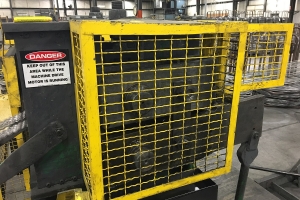OSHA stats highlight importance of fall protection
| OSHA’s report on its most frequently issued categories of violations in 2014 is a good reminder that protecting workers against falls is one of the most important safety measures an employer can take.Fall protection topped the list of OSHA violations cited in 2014 – with 7,272 violations across all industries that resulted in more than $20 million in fines against employers.
While careful attention to fall protection is needed in a wide variety of workplaces, evidence for its importance clearly can be seen in fatality statistics in the construction industry – falls were the leading cause of fatal construction accidents in 2013, with 294 of the 796 total deaths. OSHA offers a three-step guide for employers to address fall protection: · Plan projects to ensure that the job is done safely. Begin by deciding how the job will be done, what tasks will be involved, and what safety equipment may be needed to complete each task. · Provide fall protection and the right equipment for the job for workers who are working at hazardous elevations above lower levels. (The elevation requiring protection differs according to the hazard, e.g. general, walking working surfaces, scaffolds, steel erection, etc.) Always provide workers with the appropriate fall protection depending on the job. If workers on roofs use personal fall arrest or restraint systems, a harness and lanyard must be provided for each worker who is required to tie off to an anchor. Make sure the personal protective equipment fits and is regularly inspected to ensure it’s in good condition and safe to use. · Train workers in hazard recognition and in the care and safe use of ladders, scaffolds, fall protection systems, and other equipment they’ll be using on the job. OSHA offers numerous materials and resources that employers can use during toolbox talks to train workers on safe practices to avoid falls in construction. |


